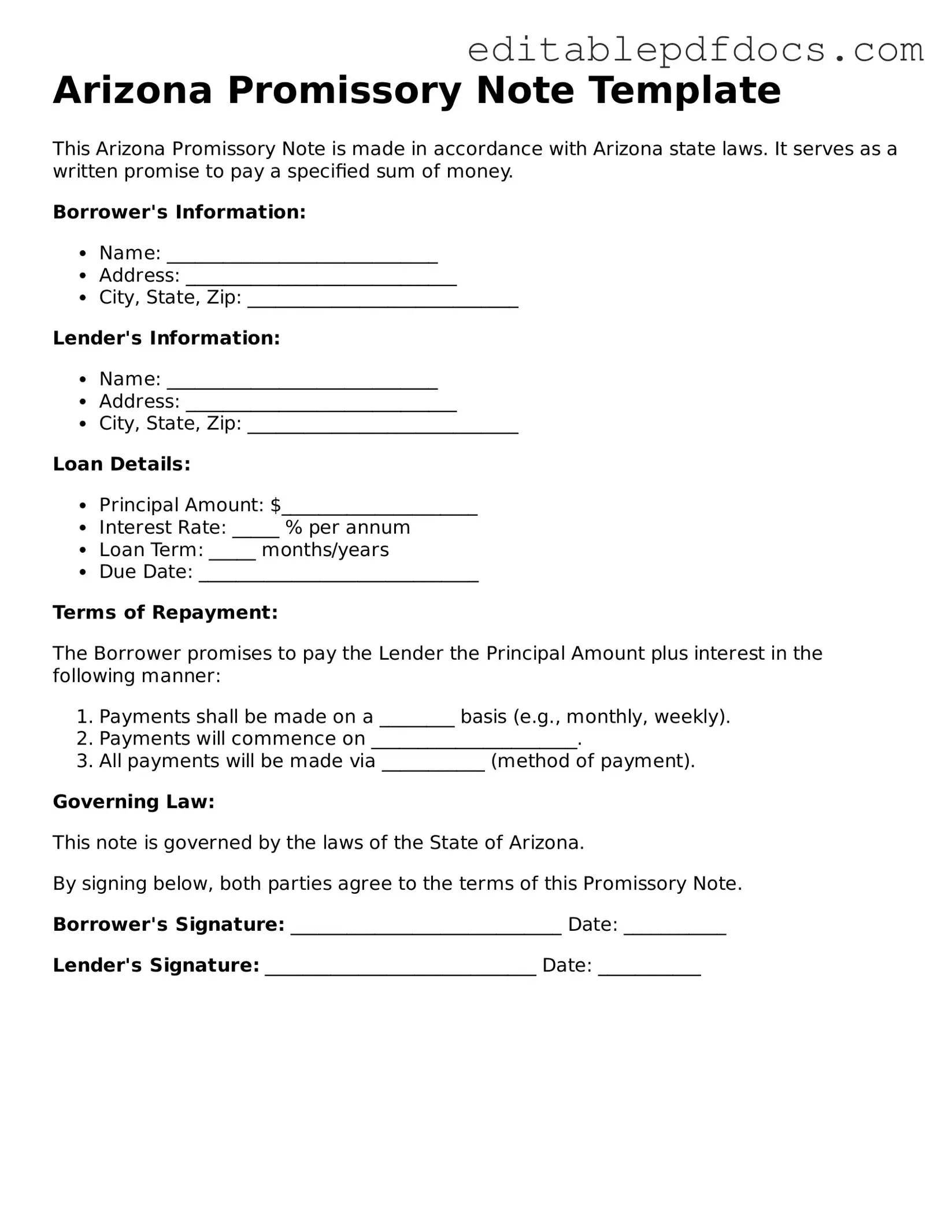Promissory Note Document for Arizona
A Promissory Note is a written promise to pay a specified amount of money to a designated person or entity at a defined future date or on demand. In Arizona, this form serves as a crucial legal document that outlines the terms of the loan agreement, including interest rates and repayment schedules. Understanding how to properly fill out this form is essential for both lenders and borrowers; start by clicking the button below to access the form.
Open Editor Now
